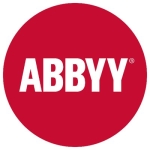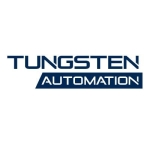What is our primary use case?
I work for a healthcare company in the pharmacovigilance sector, where we are automating business processes. One key process is case processing, which involves identifying adverse events from drugs, vaccines, or medical devices. These adverse events are reported through various channels like call centers and emails. Currently, data from these sources is manually entered into a drug safety database. We are automating this data entry and the subsequent quality and medical reviews. This automation aims to reduce the workforce from approximately 5,000 to 1,000 employees, primarily by streamlining these processes using Automation Anywhere software.
To reduce maintenance and streamline operations, we have transitioned to a cloud-based subscription model. We are utilizing Automation 360, a subscription-based automation solution, and have also adopted RPA as a service, leveraging pre-built bots offered by Automation Anywhere, some of which are free while others require payment.
How has it helped my organization?
Implementing Automation Anywhere has brought significant improvements by automating repetitive processes previously handled by a large team. This automation has reduced the workforce requirement and allowed for attended and unattended bot implementation. Consequently, human errors have decreased, the quality of deliverables has improved, and timelines have been accelerated. Previously, delays in task completion resulted in penalties for the company, but this issue has been resolved. Automation Anywhere has enabled faster processing of cases, marking a significant positive change in the company's operations.
AI is being used to automate the case intake process, which involves analyzing structured and unstructured documents like emails, articles, and scientific papers. Previously, this task was time-consuming, requiring staff to manually search documents for key information. The process has been significantly accelerated by implementing Automation Anywhere's IQ Bot, with its cognitive automation, AI integration, and natural language processing capabilities. The software automatically highlights crucial details like patient information, product specifics, and adverse events, enabling reviewers to assess document relevance quickly. This automation has reduced review time from 30 minutes per document to five to ten seconds, allowing a greater volume of literature to be processed. Furthermore, the NLP feature automatically identifies and justifies the presence of specific criteria within the documents. By integrating Automation Anywhere into their internal tool, the organization has reduced the workforce needed for this process from over 100 people to 12-15, resulting in increased efficiency, faster turnaround times, and a more manageable workload.
Automation Anywhere offers a user-friendly platform with a drag-and-drop interface, making it easy for business users with limited technical skills to implement RPA solutions. The platform provides a complete suite of tools, including task automation, cognitive automation using IQ Bot, and bot insights and analytics. While embedded with AI capabilities, the platform remains accessible to users without deep technical knowledge. Users should familiarize themselves with the available features, including built-in AI capabilities for handling various document types, and explore the Bot Store marketplace for pre-built bots that can accelerate development. Automation Anywhere enables rapid scaling with cloud-hosted architecture and prioritizes security with GDPR compliance, audit trails, and role-based access.
Initially, integrating Automation Copilot with our daily applications proved challenging. However, subsequent updates have simplified the process. While it previously functioned with attended bots but not unattended ones, expanded API capabilities now allow for greater compatibility with third-party applications. This enhanced functionality enables us to emulate various tasks and seamlessly integrate with systems like Salesforce, SAP, and Oracle. We have successfully implemented Automation Copilot for data entry, updates, and, most significantly, report generation, resulting in improved efficiency and productivity.
Automation Copilot has significantly increased our productivity. Integrating our systems will allow for seamless data transfer, eliminating the need for manual intervention and preventing quality issues. Tasks will be completed automatically and in real-time, increasing productivity and reducing the time spent on manual work. This eliminates the need for batch processing and ensures that everything happens instantly.
Over time, we have integrated numerous products with Automation Anywhere, leveraging their REST API for seamless data flow. This has enabled successful integrations with Salesforce, SAP, Oracle's Argus, and five of our seven internal products, particularly with Automation Anywhere's cognitive automation capabilities. As long as Automation Anywhere provides the REST API, we can integrate any application or third-party service, facilitating effortless data transfer between various tools.
What is most valuable?
The time savings are valuable.
What needs improvement?
The learning curve for Automation Anywhere is steep, especially for advanced features like IQ Bot and API automation, which require technical expertise. While basic automation is relatively easy, the platform's documentation and training materials are not comprehensive, making it challenging to master the more complex functionalities. Compared to UiPath, which offers extensive resources and support, Automation Anywhere's limited resources contribute to a steeper learning curve for those seeking to utilize its advanced capabilities.
From a business perspective, Automation Anywhere is expensive compared to other tools like UiPath, making it unsuitable for small or medium-sized businesses. It requires robust systems to run efficiently and previously had limitations integrating with legacy systems, though they are improving this with REST API support. Additionally, community support is slow and unhelpful for critical issues. While they offer IQ Bot for unstructured data, it can only automate around 50 percent of such processes, requiring manual intervention. Although Automation Anywhere supports customization, it is limited. These are key areas where Automation Anywhere could improve.
For how long have I used the solution?
I have been using Automation Anywhere for four years.
What do I think about the stability of the solution?
Despite Automation Anywhere being resource-intensive, in my four years of experience using it, I have found it to be a highly stable system that has never crashed.
What do I think about the scalability of the solution?
Automation Anywhere offers impressive automation capabilities at scale. From a product standpoint, it is highly effective and achieves its purpose well. Automation Anywhere is a strong choice for enterprise applications due to its robust functionality and cloud-based version. While the portal could be improved, the product itself is excellent and, if chosen strategically, can streamline numerous processes.
How are customer service and support?
Technical support response times are slow. While we can escalate critical issues, their carelessness with other matters, especially those impacting business priorities, is a concern. Their slow pace and occasional irresponsibility demonstrate a lack of respect for our time.
How would you rate customer service and support?
Which solution did I use previously and why did I switch?
As a UiPath certified architect and business analyst with extensive experience in UiPath and Automation Anywhere, I find UiPath to be the superior solution for most companies. While both offer cloud-native capabilities, UiPath boasts a more user-friendly interface, requiring less coding knowledge. Its AI Fabric platform provides extensive machine learning capabilities, surpassing Automation Anywhere's limited AI integration. UiPath also excels in bot management and orchestration, offering a user-friendly approach and robust capabilities. Furthermore, UiPath provides stronger security and compliance features, superior third-party integration, and greater pricing flexibility, making it accessible to companies of all sizes, unlike Automation Anywhere, which is often only affordable for mid to large companies. Although Automation Anywhere offers decent cognitive automation, UiPath's ease of use, AI capabilities, and flexible pricing make it the more versatile and comprehensive choice.
How was the initial setup?
The initial deployment was complex, requiring determining the bot type, attended or unattended and bundle handling strategies for multiple bot deployments. This process, driven mainly by configuration and orchestration, can be time-consuming for those without a technical background. Familiarity with the system streamlines deployment, while newcomers or those with limited technical expertise may find it more challenging.
What's my experience with pricing, setup cost, and licensing?
Automation Anywhere is expensive, making it more suitable for enterprise organizations.
What other advice do I have?
I would rate Automation Anywhere eight out of ten.
The benefits of Automation Anywhere projects aren't immediate. Building and implementing a successful automation system involves several stages: proof of concept, pilot process, and finally, production rollout. This process typically takes two to three months due to the necessary development, testing, and refinement. However, once automation is in production, the improvements will be significant and immediately apparent.
In a highly regulated industry with over 10,000 employees, traditional RPA faced strong resistance due to concerns about headcount reduction. To overcome this, we adopted a cognitive automation approach, integrating machine learning capabilities from Automation Anywhere into existing applications. This minimized disruption and ensured a smoother transition. By embedding cognitive automation within familiar and validated systems, we achieved production with minimal resistance. This strategy also allows the system to learn user input through reinforcement learning, adapting to expectations based on feedback and a reward/penalty system. Therefore, we prioritize cognitive automation integrated within our existing products rather than relying solely on a separate RPA suite, especially given the challenges of implementing RPA in a large organization within a highly regulated industry.
Because we use Automation Anywhere in the cloud, they manage all upgrades and provide a defined schedule. We receive regular emails about upcoming upgrades, including the specific date and time. We can communicate any concerns about potential business impacts, and they provide clarity and assurance that upgrades will not disrupt deployed bots. This ensures our work remains unaffected during the upgrade process, which they handle very efficiently.
The bots require maintenance on our end to ensure smooth operation. This includes monitoring their uptime, examining audit trails for failures, and periodically checking their performance. While Automation Anywhere handles regular software updates and maintenance, we are responsible for maintaining the business processes the bots support. This involves ongoing support and ensuring the bots function correctly. If a bot fails, we are responsible for investigating the cause and restoring it to functionality, as we understand the critical role each bot plays in our operations.
To successfully implement Automation Anywhere, prioritize hiring an experienced consultant to provide initial training and guidance. This expert can efficiently onboard other team members, ensuring a smooth transition and maximizing the software's potential. Their expertise will be invaluable in identifying suitable bots from the bot store, even if they require some customization to align with the company's unique processes. This approach saves time and resources compared to developing bots from scratch and leverages existing solutions for faster and more effective automation.
Which deployment model are you using for this solution?
Public Cloud
Disclosure: My company does not have a business relationship with this vendor other than being a customer.





















